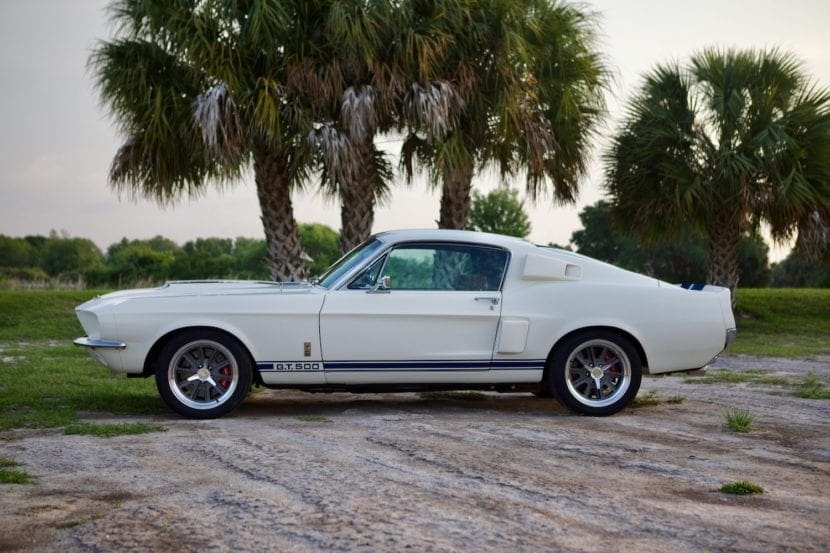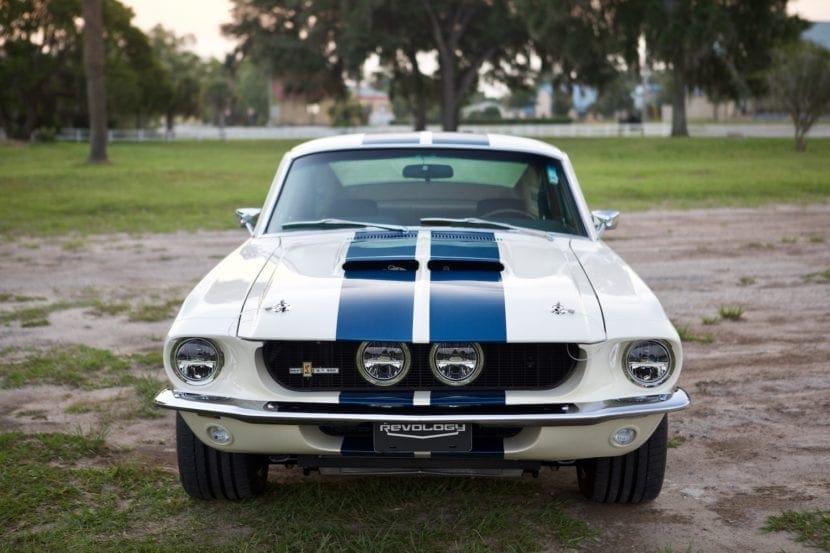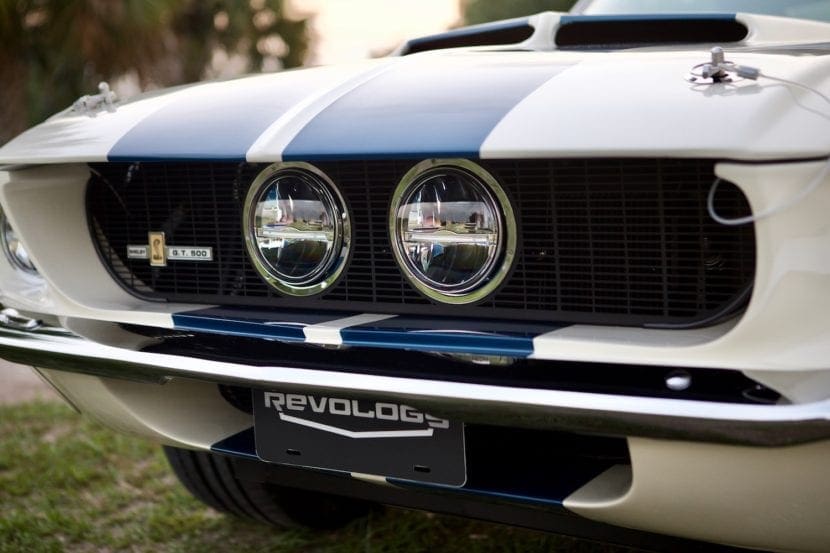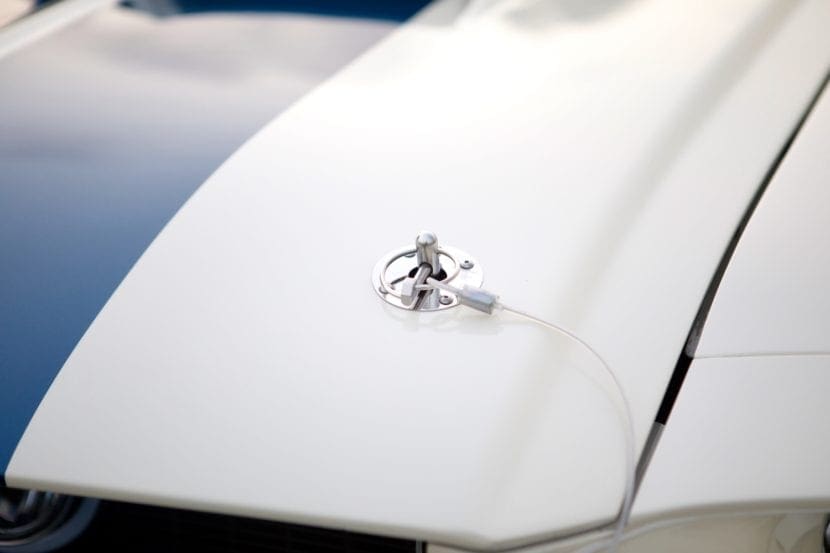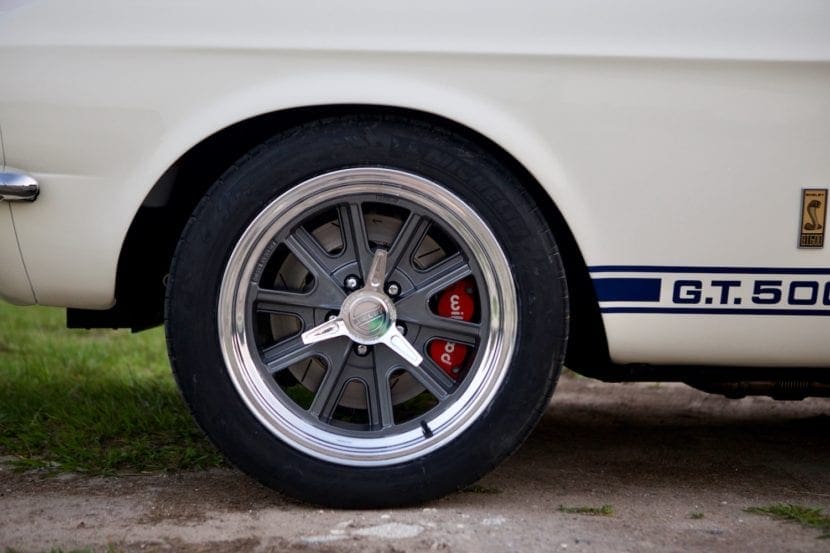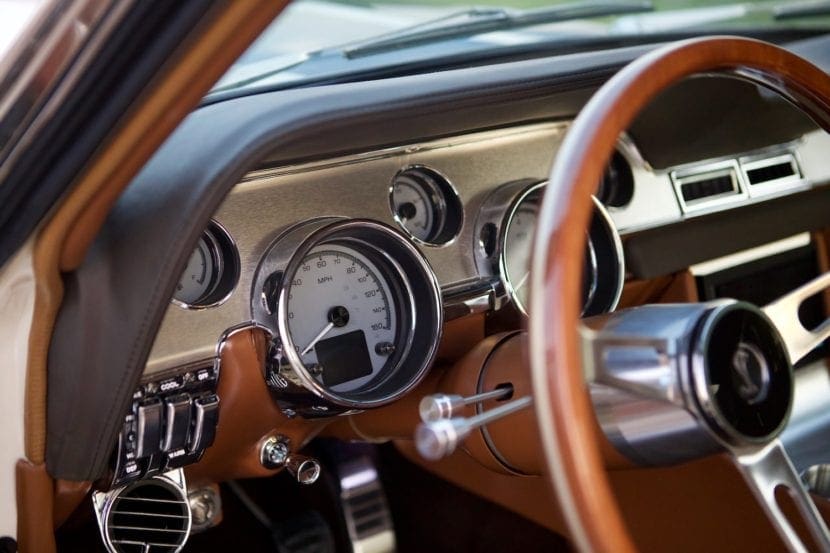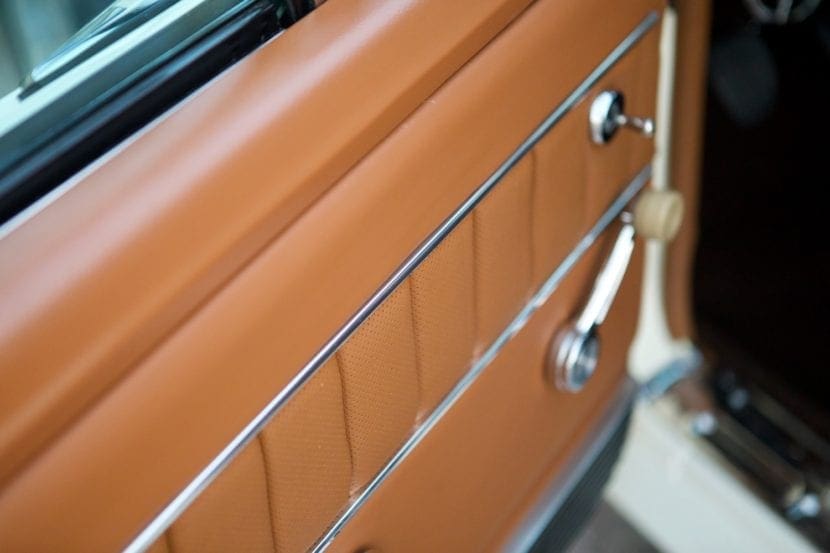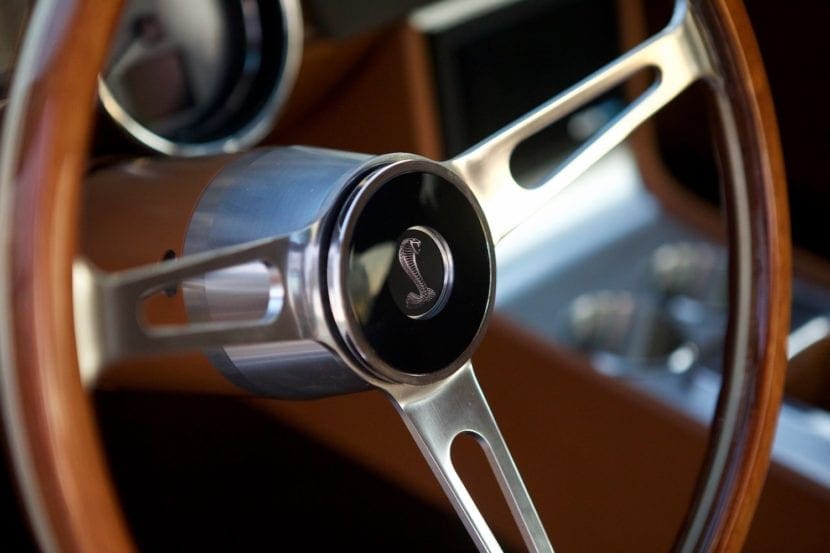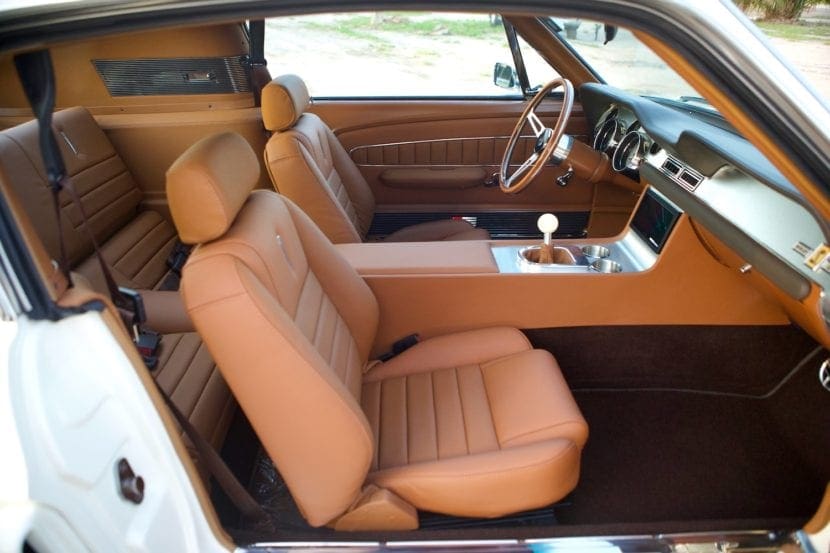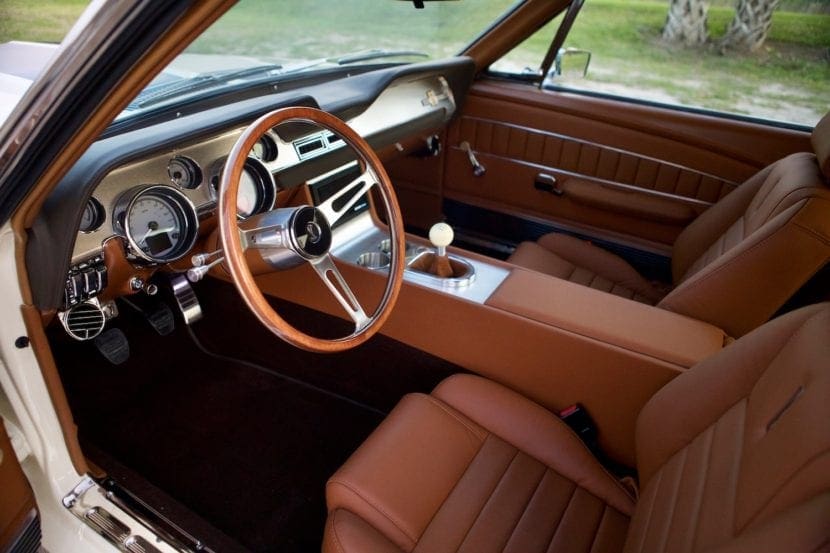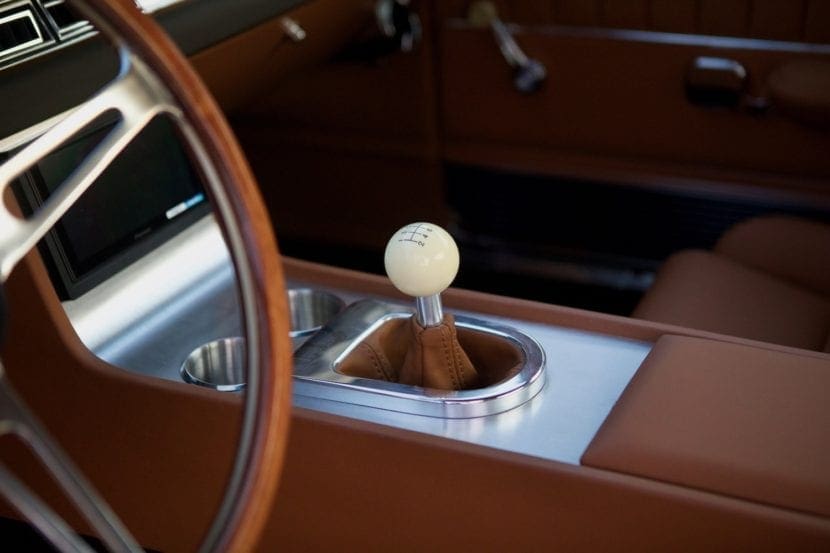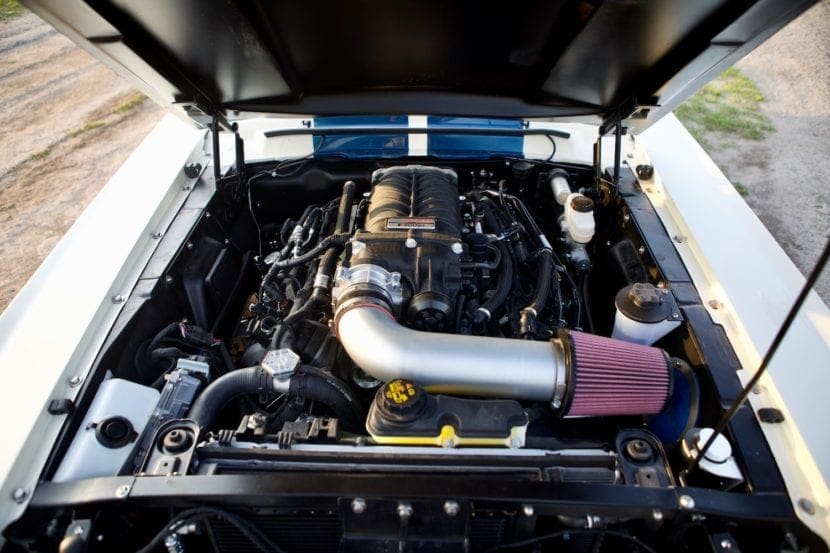

1967 Shelby GT500 | Car 82
Transcript +
Hi, I'm Tom Scarpello of Revology Cars, and this is car number 82 - a 1967 Shelby GT500 in Wimbledon White with Guardsman Blue Lemans stripes. This car is equipped with optional VM427 wheels. The wheel is inspired by the old Shelby Cobra wheel, and it really looks at home on the ‘67 Shelby. And this car is also equipped with our optional painted calipers so that the offsetting color really, really looks sharp. So, the original ‘67 GT500 was available with two interior choices, Black or Parchment. So obviously, with Revology, you're able to really choose any color you want. We do all the interiors in-house and this client chose the Mercedes Saddle. It's a really sharp interior color.
It has a darker dash and carpet, so it gives a two-tone effect. I mean, it looks like it could have been an original color combination. So back in 1967, the GT500 was the flagship of the Shelby line. It was powered by a 428 cubic inch big block V8. That engine was rated at 355 horsepower gross, although it's widely considered that it was underreported and that the actual power output was higher, but then again, it was rated in gross horsepower, not net horsepower.
So, if you translate that to today's ratings which are SAE net, let's say it was probably around 355 net. Fast forward to today, the supercharged 5-liter Coyote in the Revology GT500 puts out 710 horsepower. So that's twice the power output, but even more important than just the sheer power output is the specific output. That old engine was seven liters. The new engine is five liters. Of course, this one is forced induction supercharged. You look at how this has progressed over time. The specific output of that 428 big blocks was just over 50 horsepower per liter.
20 years ago, when I was at SVT, we came out with the 2003 SVT Cobra known as the Terminator. That car was rated at 390 horsepower net; that was a big deal at the time. That was a specific output of just over 85 horsepower per liter, and now with the 710 horsepower Roush RSC 5-liter, the specific output is 142 horsepower per liter. So twice the power but 2.8 times the specific output, so much, much more efficient but also much cleaner. Roush did a study a few years ago that compared the emissions of a ‘60s Ford V8 to the current Ford V8, which was a Coyote 5-liter TI-VCT engine. And they found the new engine - the modern engine, to be about 200 times cleaner. In other words, you could have 200 modern engines running at the same time, and they would put out fewer emissions collectively than one 60s engine.
So, the advancements in emissions technology have been phenomenal. It's not even close when you consider just how much the internal combustion engine has evolved from the ‘60s to today. So, it seems like the end of an era. GM announced earlier this year that their intention was to stop producing internal combustion engines by 2035. Just last week, Honda announced that they intended also to eliminate all internal combustion engines from their lineup as of 2040. So, looks like we're all going to be riding around in automated electrical pods. The evolution of the industry, that's how technology goes. The glory days of the ‘60s kind of gave way to the malaise era of the ‘70s, where cars were all underpowered. They had a fuel crisis going on, and there were tighter emissions controls, and the industry couldn't really react quickly enough to be able to deliver cars that were, that had good performance and drivability and reliability and so forth. But eventually, they did, and you've got just phenomenal performance and efficiency out of today's internal combustion engines but technology marches on.
So where does that leave us, car people, that love the sound of an internal combustion engine and just the feel. Well, I think it's going to be a lot like horses are today. People don't use horses for transportation, but people who are horse enthusiasts still keep horses and show them and race them. And I see cars like this being really an enthusiast toy and will be able to use them in places that are designed for them to be used.
I do think that there'll always be an appreciation for these mechanical things. I mean, look at mechanical watches. The Quartz watch tells time more accurately. There's something really special about the mechanical watch and the complexity of the movement, and I think there'll always be people that appreciate the complexity of an internal combustion engine. Cars are my passion, and they've always been my entire life. And I'm glad that I was able to live in a time where I could see the whole transition of the industry. When I'm 80 years old, and I'm riding around in my automated electric pod, I can look back and think that 'I knew the glory days of the automobile.' This car just looks like it's going to kick your ass. But it's so nice and so friendly and so easy to drive!







